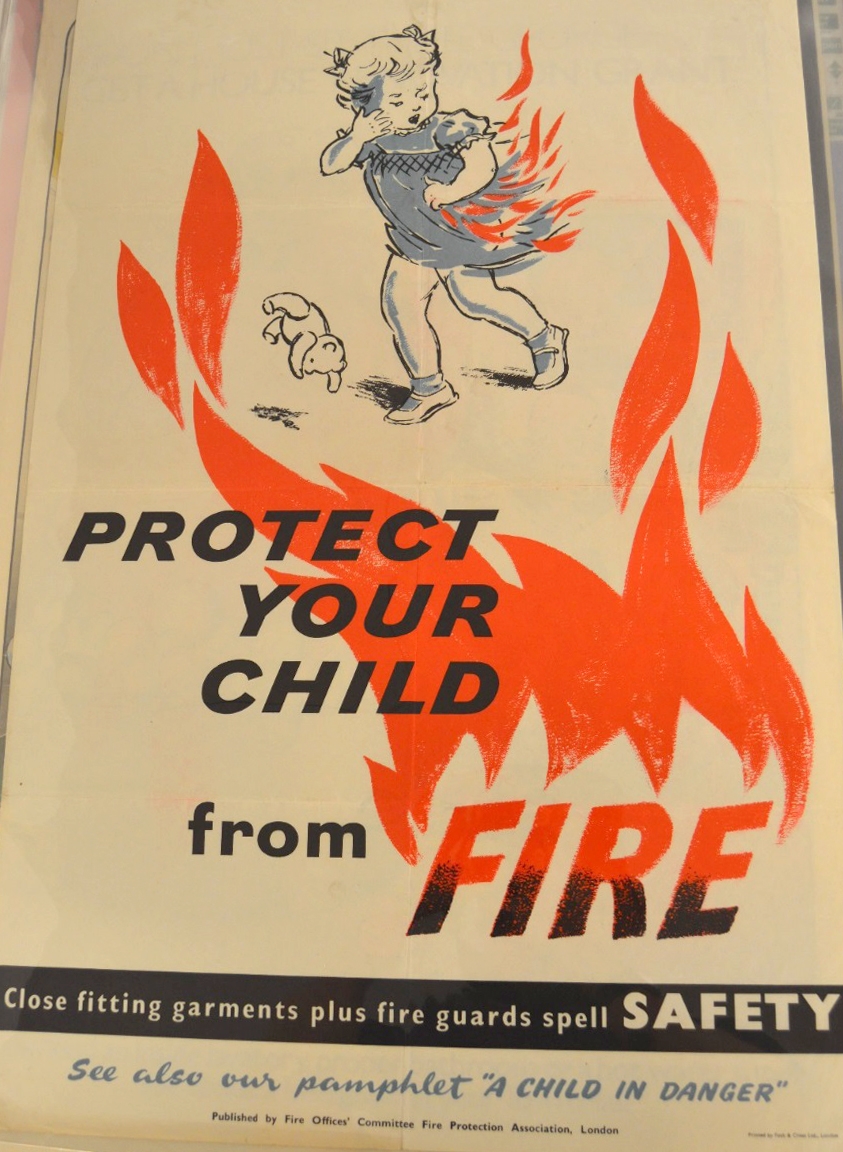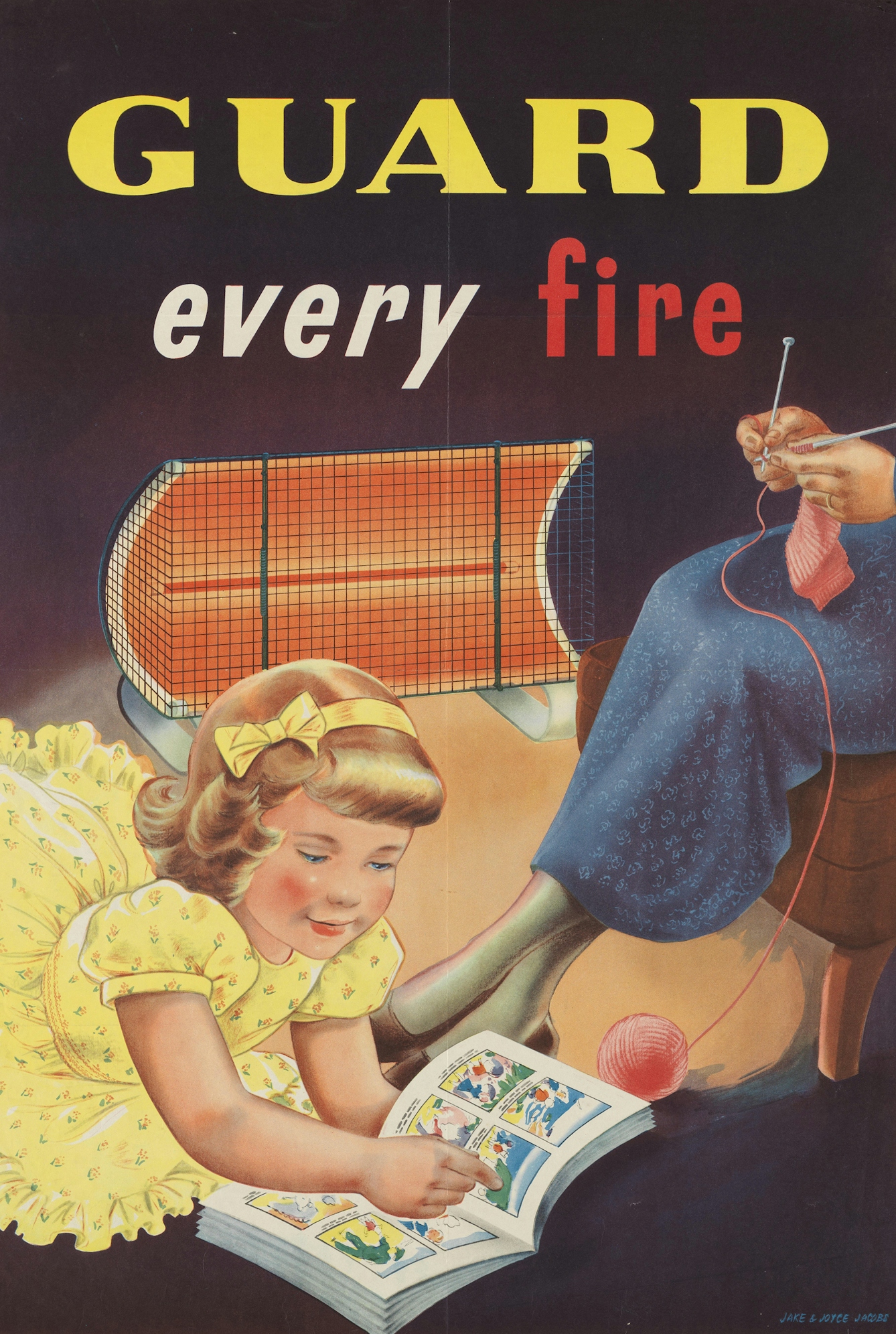Whose responsibility is it to prevent accidental burns and scalds in the home? Shane Ewen’s research shows that it’s everyone’s concern, especially when it comes to protecting children.
Children in burns prevention campaigns
Shane Ewenaverage reading time 4 minutes
- Article

Last year, 6,637 children were seriously burned or scalded in the UK. Analysis of hospital data reveals that the main causes for these injuries were spills from cooking and hot drinks, and contact burns from hot objects like heaters, irons, oven doors and hair straighteners.
Campaigns to raise public awareness about burns prevention take a ‘mixed economy’ approach that originated during the early 20th century, drawing in partners from charities, hospitals, community health, and fire and rescue services. This approach emphasised the importance of education as well as improved design, and produced emotional campaigns, often centred on the image of a young child.
In the past year I have been researching this ‘mixed economy’ approach in the burns related ephemera in the library at Wellcome Collection, for a project called Forged by Fire: Burns Injury and Identity in Britain, c.1800-2000, with Professor Jonathan Reinarz and Dr. Rebecca Wynter.

Home safety poster produced by the National “Safety First” Association in 1937.
The earliest burn prevention campaigns were instigated by voluntary organisations and industry bodies. The National “Safety First” Association (formed in 1916, and renamed the Royal Society for the Prevention of Accidents in 1941) established a reputation for conveying simple safety messages through visually-striking posters. Its first known home safety poster, 'Guard Open Fires', was produced in 1937, and we have traced its display in public exhibitions across the country, including those organised by local branches such as the Birmingham Accident Prevention Council. The poster uses vivid colours – the red represents the dual security and danger posed by fire – to stress to parents the significance of a guarded open fire-place for the safety of young children.
Between 1940 and 1949, approximately 7,800 children suffered fatal burns or scalds, with roughly a fifth of these involving under-fives. Burns and scalds accounted for the second largest number of accidents in the home, behind falls, with a disproportionate number affecting girls. A major report into domestic burns accidents, published in 1953, identified three particular risks facing children in the home - unguarded fire-places, saucepan handles sticking out over the edge of the stove, and loose tablecloths covered with hot teapots and teacups, which could be easily pulled off by a child.

Fire safety poster produced by the Fire Protection Association, 1946. Image credit: Shane Ewen.
Posters continued to incorporate an image of a child as the recipient of burns injuries. The Fire Protection Association, an industry body formed in 1946 by insurance professionals, produced a poster called 'Protect Your Child from Fire' featuring a young girl whose dress has caught fire, to shock parents.

'Guard every fire' by Jake & Joyce Jacobs. Issued by the Central Council for Health Education, 1940-49.
The source of ignition to the girl’s dress is left open-ended to reflect the multiple burning risks in the modern home. While the open coal fire remained the prevailing cause of domestic burns in 1950, gas fires and electric heaters were increasingly common in homes and responsible for growing numbers of accidents. The accompanying text, “Close fitting garments plus fire guards spell SAFETY”, indicates that fires were frequently the product of multiple factors.
The decision to show the girl’s dress in flames reflects a hardening attitude towards using more graphic images to shock the public into taking precautions against accidents. Leonard Colebrook, an active fire prevention campaigner and the retired Director of the Birmingham Burns Ward, gave permission for the Ministry of Health to use his clinical photographs of children with burns injuries in its 1956 ‘Death Traps in the Home’ and 1958 ‘Danger in the Home’ campaigns (the records are available at the National Archives).
The annual reports of local medical officers of health reveal the UK-wide reach of the Ministry of Health campaigns, as materials were distributed in rural Scottish districts as well as in cities. This further demonstrates the mixed economy of fire safety that emerged during the 1950s, connecting local and central government as well as industry bodies and healthcare professionals.
Public campaigns no longer use such shocking imagery, preferring a less explicit approach towards depicting burns injuries. Yet images of children remain central to campaigns, highlighting the risk of physical and psychological trauma from burns, as the 2017 National Burns Awareness Day campaign demonstrates.
A poster for child burn awareness, issued by the Children's Burns Trust for National Burn Awareness Day, 2017.
Children have long been the focal point of efforts aimed at fire prevention because they are integral to the extension of the state’s duty of care into the home. The unsupervised child, left in front of an unguarded fire or heater, became a source of public concern in the 20th century. This caused the state to legislate on domestic safety - first in 1908 with the Children’s Act, and subsequently in 1953, with the Heating Appliances (Fireguards) Act, which introduced tougher standards of fire prevention within the home as well as penalties for negligent parents. But this is a more complex story than the extension of the state into child protection, as charities such as the British Burns Association have shown with their public awareness campaigns.
About the contributors
Shane Ewen
Shane Ewen is Reader in Urban History at Leeds Beckett History and the author of Fighting Fires: Creating the British Fire Service, 1800-1978. If you have any stories related to his research that you wish to share, please contact Shane at s.ewen@leedsbeckett.ac.uk.

